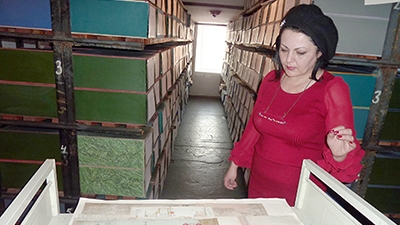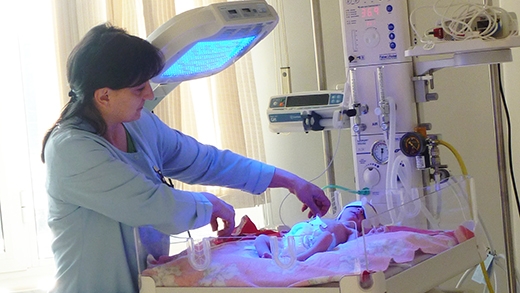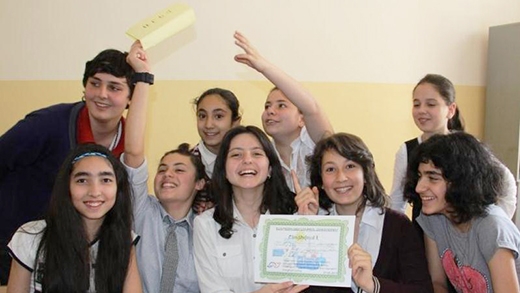Gohar Avagyan, a 30 year veteran at the National Archives of Armenia, can hardly recall a time in her career when she and other employees did not have to check the condition of precious documents after a long, cold winter. Thankfully, that is now changing – for Gohar, her colleagues and the documents.
“This is the second consecutive winter that we are not fearful to witness faded illuminations on documents,” says Gohar, proudly showing the elaborately decorated and colorful bulla of the 18th century Catholicos. “It was so freezing in the winter time that we barely managed to care for the staff, let alone the priceless documents we housed.”
Today, the National Archive – with more than 3 million documents, some dating back to the 17th century – has a comfortable environment for staff and all the right conditions for the conservation of documents, old and new. And that’s not all – the Archive also saves more than US$10,000 each year in energy costs.
Six years ago, many skeptics raised their eyebrows when a World Bank study estimated that potential energy efficiency investments in Armenia’s public facilities could bring about the highest returns with payback periods of only two to ten years. That skepticism was soon dispelled, however, when it became apparent that Armenia could save more than US$ 360 million annually (equivalent to 4.3 percent of its 2009 GDP) through energy efficiency investments.
“It seemed quite unrealistic that by rehabilitating the heating system, replacing the doors and windows, insulating the attic and walls we would save that much and pay back the investment in six years,” says Amatuni Virabyan, Director of the National Archive. “With this project we also got exposed to new technologies and efficient use of staff time and scarce resources.”
An innovative financing scheme – designed under an Energy Efficiency Project financed by the Global Environment Facility – has created opportunities for public institutions to invest in energy efficiency retrofits and use the realized energy savings to repay the investment.
Even against the backdrop of unexpected increases in gas tariffs (18.2 percent) and electricity tariffs (26.7 percent), the first twenty seven retrofitted public facilities proved the financial viability of energy efficiency investments. So far, the cumulative investments in public facilities is about US$3.5 million; by the end of the project it will reach more than US$8 million.
With over forty facilities already benefitting from the project and close to one hundred newcomers expected to join by the end of June 2015, it is clear that the objective of reducing energy consumption in social and other public facilities, while decreasing greenhouse gas emissions through energy efficiency investments, has fully lived up to expectations.
A new dynamic has also been created in the local market, now exposed to energy efficient renovation and construction technologies that are creating spillover effects for energy efficient private housing demand and a revision of building standards.
“Beyond the impressive savings we experienced, our motivation was to introduce cutting edge know-how and new technologies,” states Koryun Atoyan, Rector of the Armenian State Economic University. “Previously, we had twenty two people taking care of all the matters related to the heating system. Now, with the new system in place, we manage it with less than half of the staff we employed.”
The Energy Efficiency Project financed a range of retrofits at the university, including replacement of doors and windows, replacement of the boiler and subsidiary equipment, and changing of the gas connection and water supply, sewage, and ventilation. This work created a spillover effect also, whereby additional renovation and cosmetic improvement of facilities were fully financed with the institution’s own budget.


